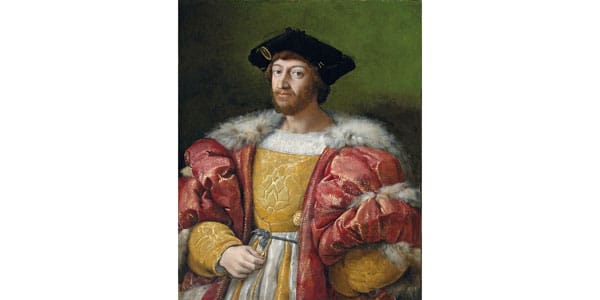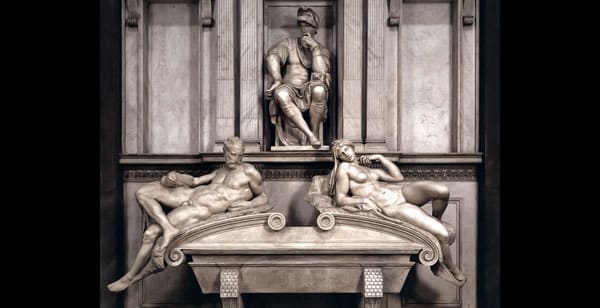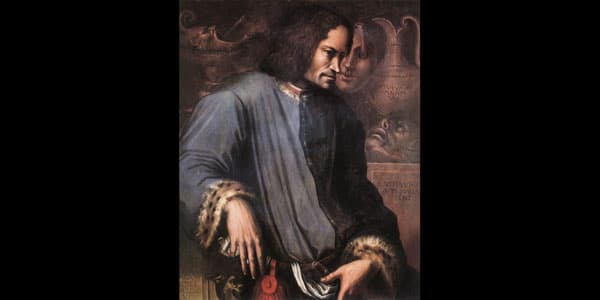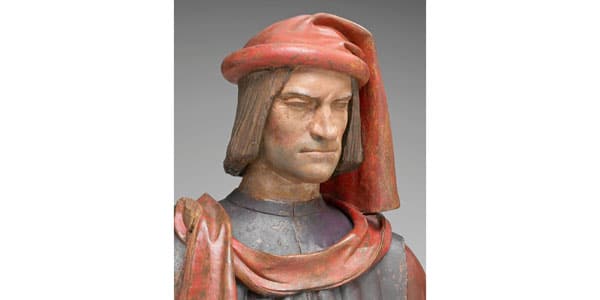Lorenzo di Piero de Medici entered the annals of Italian history as “il Magnifico” (the Magnificent), which largely explains the significant role this distinguished statesman played in the country’s economic, political, and cultural life.
Page Contents
Family
Lorenzo originated from the powerful Medici clan and was the grandson of Cosimo the Elder (Cosimo di Giovanni de’ Medici), the dynasty’s founder known as a successful banker, political figure, and the wealthiest man in Europe.
The future politician was born in 1449 to Piero I (Piero di Cosimo de’ Medici) and Lucrezia Tornabuoni (Lucrezia Tornabuoni), the daughter of a famous merchant. His father lacked the brilliant ability to conduct state affairs. He was known for his poor health, earning the nickname “the Gouty” (il Gottoso). Piero I held power for a brief period (1464-1469) and died when Lorenzo was 20, passing the informal reins of the Florentine Republic to his young son.
While not dazzling in appearance, the wise and prudent Lucrezia Tornabuoni was a well-educated and religious woman who always showed a keen interest in social life and philanthropy and commanded unwavering authority within the family. Lucrezia managed the Medici household’s financial affairs and was Lorenzo’s primary advisor on all matters.
His younger brother, Giuliano de’ Medici, was murdered at the age of 25 in a conspiracy orchestrated by Florentine patricians and their supporters. He assisted Lorenzo in all his endeavors, striving to be a loyal friend and helper.
Education and Upbringing
A scion of the influential Medici clan, Lorenzo received an exceptional education, making him one of the most enlightened individuals of his era. From an early age, he displayed a sharp intellect, extraordinary abilities, and talents in various sciences. Lorenzo was fluent in foreign languages, including Greek and Latin, had an excellent command of literature, philosophy, and eloquence, possessed poetic talent, and could play several musical instruments. The young man’s mentors and teachers, who later became his true friends, were renowned humanists of the Renaissance era:
- Giovanni Argiropulo, an expert in ancient Greek literature and philosophy;
- Cristoforo Landino, a thinker, philologist, and teacher of poetics and rhetoric;
- Marsilio Ficino, a philosopher and astrologer;
- Angelo Ambrogini, also known as Poliziano, is a playwright and poet.
From a young age, Lorenzo traveled extensively, and thanks to the efforts of Cosimo the Elder, who saw his grandson as his future successor, he successfully learned the intricacies of political affairs. For instance, by age 15, he was welcomed at the courts of the major European states, carrying out important diplomatic missions on behalf of his father.
Marriage and Love
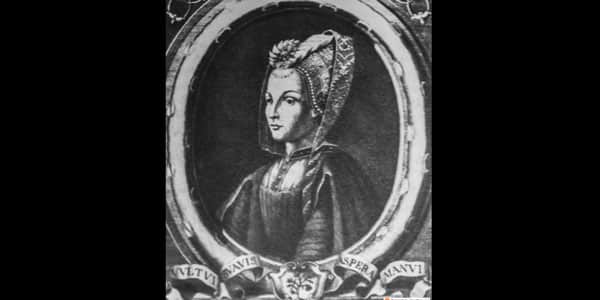
The girl was known for her beauty, modesty, and purity. Still, the union, which later produced three sons and four daughters, was unhappy. Clarice did not share her husband’s music, poetry, and art interests. She disliked the vibrant and bustling life in Florence, spending most of her time with the children at one of the country villas in Cafaggiolo. Lorenzo’s wife died at the age of 37 from tuberculosis.
The only love and muse of the republic’s ruler was one of Florence’s first beauties, Lucrezia Donati.
Lorenzo fell deeply in love with her when he was just a 16-year-old boy, and he maintained this tender feeling for many years, praising his heart’s lady in poems. In his gentle sonnets, he called his beloved a goddess and compared her to the Madonna. Still, his belonging to the powerful Medici dynasty did not allow for a marriage of love. Moreover, according to contemporaries, Lucrezia herself was married and remained faithful to her husband.
Governance Features
Lorenzo the Magnificent ruled for over 20 years, during which the Florentine Republic experienced peace, stability, and prosperity. Amicable relations were established with Milan and Naples. Thanks to the Medici family’s capital, the art of diplomacy, and a wide network of informants, significant achievements were made in foreign policy. Without a powerful army, Florence gained considerable authority in Italy.
The state supported the poor segments of the population. Peasants were relieved from the heavy duties owed to feudal lords. The absence of unbearable tax burdens fostered the development of agriculture and craftsmanship. Lorenzo’s popularity among the people reached unprecedented heights.
For a time, the Florentine Republic maintained its constitution and main institutions of power, but they were merely formal. The governance system increasingly took on the characteristics of a sole and absolute monarchy. Any rebellions, conspiracies, and attempts to eliminate the Medici clan were met with ruthless suppression.
In 1480, to consolidate his power, Lorenzo introduced several reforms: the old parliament was disbanded, and the Council of Seventy was formed—a legislative and executive body made up of allies and supporters of the Medici family. The republic’s ruler controlled two colleges dealing with foreign policy and financial-legal matters.
No domestic or foreign policy decision was made without Lorenzo’s participation and approval. Even marriages between influential citizens were coordinated with him. Importantly, key positions could be held by individuals not belonging to the upper class but with specific managerial talents. Notably, one of the most illustrious representatives of the Medici dynasty was not titled: officially, Lorenzo held no state titles or executive positions, though he could declare himself king or duke at any moment.
Florence in the Era of Lorenzo de’ Medici
During Lorenzo the Magnificent’s reign, flourishing Florence lived up to its name (which translates from Italian as flourishing) and shone in its brightest colors. New buildings and roads were constructed, and streets were beautified. In 1489, a decree provided significant tax breaks for construction workers. Life in the city was vibrant: lavish festivals, knightly tournaments, carnivals, masquerades, and theatrical productions were constantly held.
Like his famous grandfather, Cosimo de’ Medici, Lorenzo the Magnificent was a generous patron and collector of books and valuable works of art. He invited talented artists and sculptors, paid them profitable commissions, and ensured decent working conditions. The ruler of the Florentine Republic patronized many geniuses of the Renaissance era. Here are just a few of them:
- Sandro Botticelli;
- Michelangelo Buonarroti;
- Leonardo di ser Piero da Vinci;
- Andrea del Verrocchio;
- Domenico Ghirlandaio.
Lorenzo added to the family’s book collection. He founded the first public library in Europe, which initially included more than ten thousand valuable volumes. Later, it was named after him as the Laurentian Library (Biblioteca Medicea Laurenziana). Today, the library’s holdings comprise approximately 150,000 printed works, 11,000 manuscripts, and more than 2,000 papyri.
In 1472, Lorenzo, a fine connoisseur of elegant literature, transformed a declining school in Pisa (Pisa) into the first Tuscan university. Thanks to his efforts, a similar educational institution was also established in Florence. At that time, it was the only educational center in Europe where the Greek language was taught.
I recommend reading and visiting the Academy of Fine Arts in Florence.
The Final Years and Death
Lorenzo the Magnificent lived a vibrant, fulfilling, but short life: he died early at the age of 43, suffering from a severe disease, gout, inherited from his father. The extravagance of the uncrowned monarch and carelessness towards the financial affairs of the Medici house led to sad consequences. Moreover, the family bank loaned to heads and influential individuals of central European states, who were slow to repay their debts. Exorbitant spending from personal funds and the state treasury forced tax increases, which had more than tripled by the end of Lorenzo’s reign. Ordinary citizens expressed their dissatisfaction, but it never escalated into open revolts.
In 1492, when one of the most illustrious members of the Medici clan passed away, all the inhabitants of Florence took to the streets to bid farewell to their beloved ruler.
Where the Tomb Is Located
Lorenzo, like Giuliano, was buried in the memorial chapel of the Basilica of San Lorenzo (Basilica di San Lorenzo). In the 1520s and 1530s, the coffins of the brothers were decorated with marble statues by Michelangelo Buonarroti. The decoration of the tombs is based on a profound allegory.
The celebrated rulers of Florence are represented as antique generals, with figures symbolizing day and night (at Giuliano’s sarcophagus) and morning and evening (on either side of Lorenzo’s tomb) – a reminder of the transience and mercilessness of time.
Portrayals in Painting
Several works by Italian masters have survived to the present day depicting Lorenzo the Magnificent. The most famous is a painting by the renowned architect, artist, and historian Giorgio Vasari, created in the 1530s on commission by Alessandro Medici (Alessandro di Lorenzo de’ Medici).
In the portrait, Lorenzo is depicted as weary, sitting with his head bowed, immersed in his thoughts, with a thoughtful and focused gaze directed into the distance. This famous canvas can be seen at the Uffizi Gallery, which we recommend visiting with an individual professional guide.
Interestingly, all paintings depicting one of the most outstanding members of the Medici clan were created posthumously.
It is believed that artists working on the canvases used for reference and accurate portraits resemble a relief sculpture created by Andrea del Verrocchio, a friend and favorite master of Lorenzo.
The Medici: Masters of Florence Series
In modern art, the image of Lorenzo and other representatives of the famous Florentine dynasty is vividly and in detail presented in cinematography in the multi-part film Medici: The Magnificent. The historical drama was released in 2018 and won the hearts of millions of viewers. British and Italian filmmakers worked on the project. The role of Lorenzo is played by English actor Daniel Sharman.
 Italy for me From Italy with love
Italy for me From Italy with love



